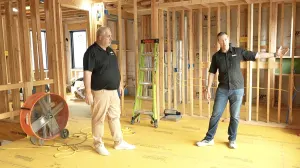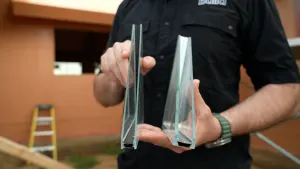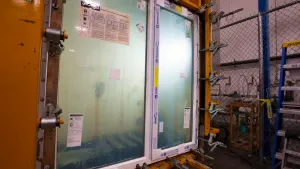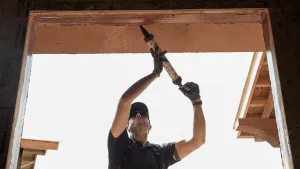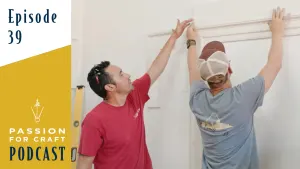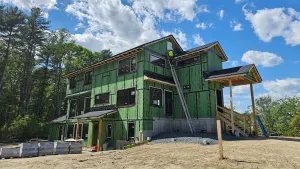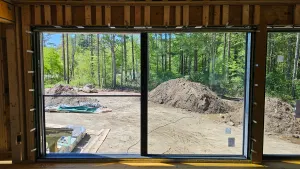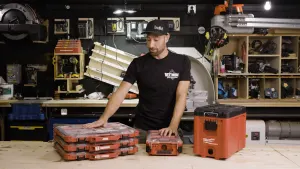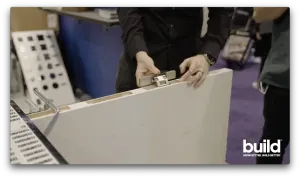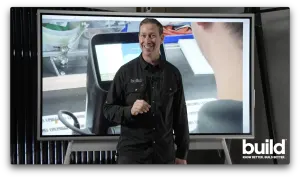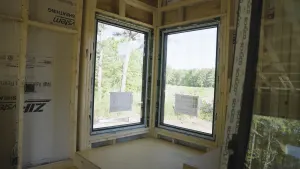The field of building and construction is filled with challenges, and one of the less obvious ones can also be one of the more expensive to surmount. Doors are such a commonplace part of a home that it’s easy to overlook the special considerations that must be taken into account for installation and proper use.
Among the most common door problems is warping. Just about any type of material is susceptible, although plywood and solid wood doors are a special concern. Doors made with properly sealed medium-density fiberboard (MDF) or waterproof MDF are a good choice for protecting against warpage, but they are also less durable than wooden doors.
Warping is caused by several factors, including elevated moisture or humidity in the home and insufficient physical support. The taller and bigger the door, the more challenging it is to support — and therefore the greater the chance of warpage. Warping may also occur when doors are misplaced during the construction phase. For example, leaning a door vertically against a wall while it waits in line to be installed is a surefire way to cause warping.
Moreover, the problem is liable to become noticeable only after construction is complete. Addressing it means disrupting both the company’s workflow and the homeowner’s life. The difficulty of repairing a warped door has traditionally led companies to opt for replacement instead — involving not only the expense of fabricating a new door, but also the costly challenge of finishing it to match the rest of the home. If the door being replaced has a paint finish, there are considerations such as sheen and color; if it is stained, there is the need to match the wood species.
Fortunately, however, smart construction practices and component choices can mitigate the potential for warpage. For example, a company can build a storage rack to serve as a holding pen for doors not yet installed. Each door sits on its side with pieces of foam placed in between for protection. The storage rack also enables all the doors to be stored in a well-chosen spot. While a home’s garage may offer ample storage space, its humidity fluctuations make it inhospitable to door storage. Instead opt for a location where a humidifier can be run to maintain a constant humidity, during post-drywall and post-trim stages.
Consultation with a supplier can also provide guidance about factors such as material weight ratings and hinge placement. This is especially important in cabinetry, which tends to be characterized by thinner doors made from millwork materials such as ¾” MDF. The common practice of placing hinges only at the top and bottom of a tall millwork door leaves its middle unsupported. This problem can be resolved, however, by well-placed installation of multiple hinges or incorporation of a metal stiffener that offers support along the backbone.
Along those lines, architectural and industrial hardware supplier Sugatsune has recently introduced a line of "door straighteners" that address the potential for cabinet door warpage on multiple fronts. These include two models designed to be recess-mounted under the laminate and fully concealed from view: the DSR423, made for minimum door thicknesses of 12mm (½") and the DSR403, made for minimum thicknesses of 18mm (11/16"). There is also a partially recessed straightener made for minimum thicknesses of 16mm (⅝"), the DSR213. Each of these is a metal device installed during the manufacturing stage to future-proof against warping.
The company also launched the DSR701, which can be retrofit into a cabinet door with a minimum thickness of 16mm (⅝") in a partially recessed or surface-mount installation. This device is made to address warpage after it has already occurred. Sugatsune can offer guidance on best practices for working with its straighteners, for which installation varies by door mount type.
The potential for door warpage presents a challenge to construction companies and homeowners alike, but it is not without solutions. Given the essential role that doors play in defining the boundaries and dimensions of our living spaces, it's worthwhile to give careful consideration to the many options for maintaining door straightness.

 Share on facebook
Share on facebook Tweet
Tweet Email
Email Share on Linkedin
Share on Linkedin


